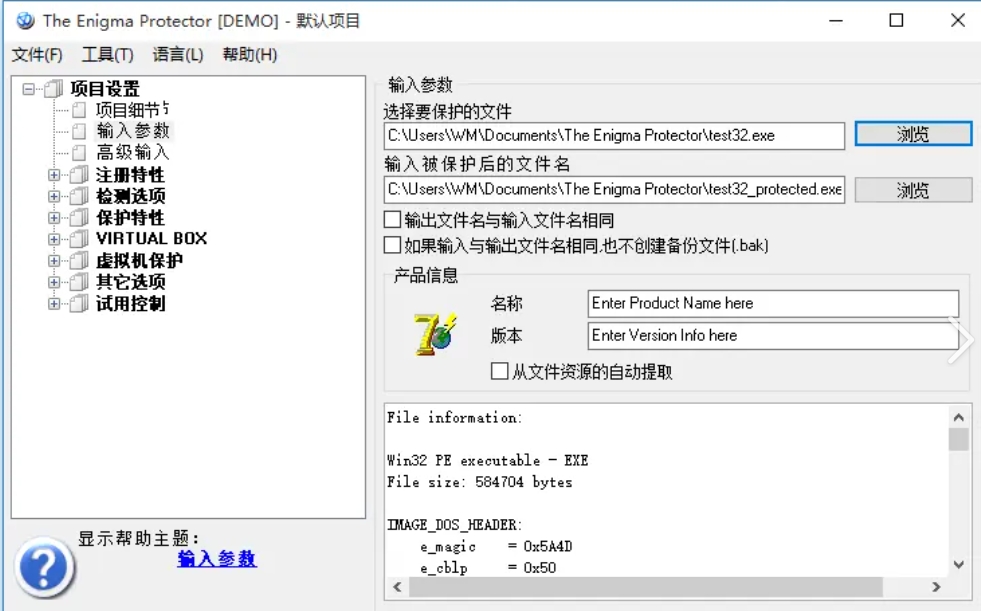1.AVL树的特性
二叉搜索树虽可以缩短查找的效率,但如果数据有序或接近有序二叉搜索树将退化为单支树,查 找元素相当于在顺序表中搜索元素,效率低下。因此,两位俄罗斯的数学家G.M.Adelson-Velskii 和E.M.Landis在1962年 发明了一种解决上述问题的方法:当向二叉搜索树中插入新结点后,如果能保证每个结点的左右子树高度之差的绝对值不超过1(需要对树中的结点进行调整),即可降低树的高度,从而减少平均搜索长度。
一棵AVL树是空树,或者是具有以下性质的二叉搜索树:
-它的左右子树都是AVL树
-左右子树高度之差(简称平衡因子)的绝对值不超过1(-1/0/1)
用右子树减左子树高度表示左右子树高度之差(平衡因子),下图用蓝色表示节点的平衡因子,如图为一棵AVL树

因为要控制平衡因子,AVL树节点相比于普通二叉树节点增加了:平衡因子、父节点指针(便于找到父节点控制平衡因子),模拟AVL树节点的定义如下
template<class T>
struct AVLTreeNode
{
AVLTreeNode(const T& val)
: _pLeft(nullptr), _pRight(nullptr), _pParent(nullptr)
, _val(val), _bf(0)
{}
AVLTreeNode<T>* _pLeft;// 该节点的左孩子
AVLTreeNode<T>* _pRight; // 该节点的右孩子
AVLTreeNode<T>* _pParent; // 该节点的双亲
T _val; // 该节点储存的数据
int _bf; // 该节点的平衡因子
};
2.AVL插入时如何维持平衡
AVL树插入时首先要遵循二叉搜索树的规则,找到对应插入位置,注意节点_pParent的链接
2.1找到插入位置插入并链接
Node* newnode = new Node(x);
Node* cur = _root;
Node* parent = nullptr;
if (_root == nullptr)
{
_root = newnode;
return true;
}
//使用cur找到插入位置
while (cur)
{
if (cur->_val == x)
{
return false;
}
else if (cur->_val < x)
{
parent = cur;
cur = cur->_pRight;
}
else if (cur->_val > x)
{
parent = cur;
cur = cur->_pLeft;
}
}
//链接节点
if (x < parent->_val)
{
parent->_pLeft = newnode;
}
else
{
parent->_pRight = newnode;
}
newnode->_pParent = parent;
cur = newnode;在插入前,这棵树就是一块AVL树遵循AVL树的规则,在插入后可能会破坏规则,就要继续向祖先更新、查看平衡因子。
2.2更新平衡因子
在插入后parent节点平衡因子存在3种情况,有的情况发现此子树的高度不变就不必向上继续更新
若parent的平衡因子,用一个循环实现向上更新
更新后平衡因子存在以下几种情况
1.平衡因子 == 0
说明parent插入前不平衡,插入在短的那边,插入后平衡了,插入后高度不变不需要往上更新
2.平衡因子 == 1或-1
说明parent插入前平衡,插入后不左右子树高度差改变的,那parent所在树高度更新,需继续往上更新
3.parent的平衡因子 == 2或-2
说明parent插入前平衡因子 == 1 或 -1,插入在长的那边了,加剧了parent的不平衡,此时已经违反规则,需要旋转处理调整
while (parent)
{
//使用循环向上更新
//更新平衡因子
if (cur == parent->_pLeft)
{
parent->_bf--;
}
else if (cur == parent->_pRight)
{
parent->_bf++;
}
//继续向上更新
//若已经更新到根,停止
if (parent == nullptr)
{
break;
}
//1.若此时parent已经平衡(==0),说明插入节点使子树平衡,并没有增加子树高度,不用往上更新
if (parent->_bf == 0)
{
break;
}
//2.若此时parent为弱平衡(_bf == -1/1),说明插入节点使原本平衡的树高度更新,需继续往上更新
else if (parent->_bf == -1 || parent->_bf == 1)
{
}
//3.若此时parent已经失衡(_bf == -2/2),说明插入节点使原本弱平衡的树加剧失衡,需要旋转处理、调整
else if (parent->_bf == -2 || parent->_bf == 2)
{
//单独的一边高(subLL、subRR高),单旋
if (parent->_bf == -2 && parent->_pLeft->_bf == -1)
{
RotatoR(parent);
}
else if (parent->_bf == 2 && parent->_pRight->_bf == 1)
{
RotatoL(parent);
}
//subRL、subLR高,双旋。例:先将subR子树旋转为subRR高的情况,再使用单次左旋
else if (parent->_bf == -2 && parent->_pLeft->_bf == 1)
{
RotatoLR(parent);
}
else if (parent->_bf == 2 && parent->_pRight->_bf == -1)
{
RotatoRL(parent);
}
//旋转后这棵子树高度并没有增加,不向上继续更新
break;
}
else
{
assert(false);
}
//迭代,继续向上更新
cur = parent;
parent = parent->_pParent;
}旋转最后得到的结果:
1.遵循搜索树的规则
2.控制平衡,降低高度
而旋转时分为以下几种情况
2.3旋转调整
2.1.1.subRR/subLL长的时候树的旋转调整
如图,若插入在subRR处,parent节点的平衡因子违反了规则,需要调整此子树使之符合规则。
若插入在subLL处,与插入在subRR处类似
下图中a、b、c为抽象的树,h为抽象的树的高度,h = 0时表示空
思想:将parent及其左子树链接到subR的左边使parent子树高度与subRL一样高
具体操作为将parent链接到subR的左边,将subRL链接到parent的右边

代码实现如下,记得要更新平衡因子
//单次左旋,适用于subRR长的情况
//思想:将原来根放到subR的左边使parent子树高度与subRL一样高
void RotatoL(Node* parent)
{
Node* subR = parent->_pRight;
Node* subRL = subR->_pLeft;
Node* parentParent = parent->_pParent;
//先链接节点
if (subRL != nullptr)
subRL->_pParent = parent;
parent->_pRight = subRL;
parent->_pParent = subR;
subR->_pLeft = parent;
subR->_pParent = parentParent;
if (parentParent == nullptr)
{
//若parentParent为空则原Parent为整个树的根
_root = subR;
}
else
{
if (subR->_val < parentParent->_val)
{
parentParent->_pLeft = subR;
}
else if (subR->_val > parentParent->_val)
{
parentParent->_pRight = subR;
}
}
//再更新平衡因子
parent->_bf = subR->_bf = 0;
}
2.1.2.subRL/subLR长的时候的调整
如图,插入节点后subRL长,此时无法像上面那样使用左旋使subRR与subRL链接到parent右边树一样高
若插入在subLR处,调整方法类似

这时我们可以想办法旋转使subRR变长,我们将subRL再具体细分,h为抽象树的高度,h == 0 时表示40为新插入节点


这时我们可以先调整 subR为根的子树使用一次旋转使得subR所在子树较长,变为subRR长的情况可以单次旋转调整,最后再单次右旋

整体旋转方法如下图

记得更新平衡因子,若初始为b长,parent最后平衡因子为0,subR最后平衡因子为1;若初始为c长parent最后平衡因子为-1,subR最后平衡因子为0;若subRL为新插入节点,则h == 0则a、b、c、d都为空,parent和subR最后平衡因子都为0
代码如下
//先右旋再左旋,适用于subRL高的情况
//思想:先将subR子树旋转为subRR高的情况,再使用单次左旋
void RotatoRL(Node* parent)
{
Node* subR = parent->_pRight;
Node* subRL = subR->_pLeft;
//可能subRLL长或subRLR长,通过记录subRL原来的bf调整最后bf
int bf = subRL->_bf;
//两次旋转,旋转后平衡因子有误
RotatoR(subR);
RotatoL(parent);
//再更新平衡因子
subRL->_bf = 0;
if (bf == 1)
{
subR->_bf = 0;
parent->_bf = -1;
}
else if (bf == -1)
{
subR->_bf = 1;
parent->_bf = 0;
}
else
{
subR->_bf = 0;
parent->_bf = 0;
}
}3.插入的整体代码
bool Insert(T& x)
{
Node* newnode = new Node(x);
Node* cur = _root;
Node* parent = nullptr;
if (_root == nullptr)
{
_root = newnode;
return true;
}
//使用cur找到插入位置
while (cur)
{
if (cur->_val == x)
{
return false;
}
else if (cur->_val < x)
{
parent = cur;
cur = cur->_pRight;
}
else if (cur->_val > x)
{
parent = cur;
cur = cur->_pLeft;
}
}
//链接节点
if (x < parent->_val)
{
parent->_pLeft = newnode;
}
else
{
parent->_pRight = newnode;
}
newnode->_pParent = parent;
cur = newnode;
while (parent)
{
//使用循环向上更新
//更新平衡因子
if (cur == parent->_pLeft)
{
parent->_bf--;
}
else if (cur == parent->_pRight)
{
parent->_bf++;
}
//继续向上更新
//若已经更新到根,停止
if (parent == nullptr)
{
break;
}
//1.若此时parent已经平衡(==0),说明插入节点使子树平衡,并没有增加子树高度,不用往上更新
if (parent->_bf == 0)
{
break;
}
//2.若此时parent为弱平衡(_bf == -1/1),说明插入节点使原本平衡的树高度更新,需继续往上更新
else if (parent->_bf == -1 || parent->_bf == 1)
{
}
//3.若此时parent已经失衡(_bf == -2/2),说明插入节点使原本弱平衡的树加剧失衡,需要旋转处理、调整
else if (parent->_bf == -2 || parent->_bf == 2)
{
//单独的一边高(subLL、subRR高),单旋
if (parent->_bf == -2 && parent->_pLeft->_bf == -1)
{
RotatoR(parent);
}
else if (parent->_bf == 2 && parent->_pRight->_bf == 1)
{
RotatoL(parent);
}
//subRL、subLR高,双旋。例:先将subR子树旋转为subRR高的情况,再使用单次左旋
else if (parent->_bf == -2 && parent->_pLeft->_bf == 1)
{
RotatoLR(parent);
}
else if (parent->_bf == 2 && parent->_pRight->_bf == -1)
{
RotatoRL(parent);
}
//旋转后这棵子树高度并没有增加,不向上继续更新
break;
}
else
{
assert(false);
}
//迭代,继续向上更新
cur = parent;
parent = parent->_pParent;
}
return true;
}
//单次左旋,适用于subRR长的情况
//思想:将原来根放到subR的左边使parent子树高度与subRL一样高
void RotatoL(Node* parent)
{
Node* subR = parent->_pRight;
Node* subRL = subR->_pLeft;
Node* parentParent = parent->_pParent;
//先链接节点
if (subRL != nullptr)
subRL->_pParent = parent;
parent->_pRight = subRL;
parent->_pParent = subR;
subR->_pLeft = parent;
subR->_pParent = parentParent;
if (parentParent == nullptr)
{
//若parentParent为空则原Parent为整个树的根
_root = subR;
}
else
{
if (subR->_val < parentParent->_val)
{
parentParent->_pLeft = subR;
}
else if (subR->_val > parentParent->_val)
{
parentParent->_pRight = subR;
}
}
//再更新平衡因子
parent->_bf = subR->_bf = 0;
}
//单次右旋,与左旋思想类似
void RotatoR(Node* parent)
{
Node* subL = parent->_pLeft;
Node* subLR = subL->_pRight;
Node* parentParent = parent->_pParent;
if (subLR != nullptr)
subLR->_pParent = parent;
parent->_pLeft = subLR;
parent->_pParent = subL;
subL->_pRight = parent;
subL->_pParent = parentParent;
if (parentParent == nullptr)
{
_root = subL;
}
else
{
if (parent == parentParent->_pLeft)
{
parentParent->_pLeft = subL;
}
else if (parent == parentParent->_pRight)
{
parentParent->_pRight = subL;
}
}
//再更新平衡因子
parent->_bf = subL->_bf = 0;
}
//先右旋再左旋,适用于subRL高的情况
//思想:先将subR子树旋转为subRR高的情况,再使用单次左旋
void RotatoRL(Node* parent)
{
Node* subR = parent->_pRight;
Node* subRL = subR->_pLeft;
//可能subRLL长或subRLR长,通过记录subRL原来的bf调整最后bf
int bf = subRL->_bf;
//两次旋转,旋转后平衡因子有误
RotatoR(subR);
RotatoL(parent);
//再更新平衡因子
subRL->_bf = 0;
if (bf == 1)
{
subR->_bf = 0;
parent->_bf = -1;
}
else if (bf == -1)
{
subR->_bf = 1;
parent->_bf = 0;
}
else
{
subR->_bf = 0;
parent->_bf = 0;
}
}
//先左旋再右旋
void RotatoLR(Node* parent)
{
Node* subL = parent->_pLeft;
Node* subLR = subL->_pRight;
int bf = subLR->_bf;
//两次旋转,旋转后平衡因子有误
RotatoL(subL);
RotatoR(parent);
//再更新平衡因子
subLR->_bf = 0;
if (bf == 1)
{
subL->_bf = -1;
parent->_bf = 0;
}
else if (bf == -1)
{
subL->_bf = 0;
parent->_bf = 1;
}
else
{
subL->_bf = 0;
parent->_bf = 0;
}
}在实现后可以中序遍历整棵树,检查是否为二叉搜索树。并且检查其平衡因子是否符合规则,确定其为平衡树。
//获取高度
int Height()
{
return _Height(_root);
}
//判断是否为平衡树
bool IsBalanceTree()
{
return _IsBalanceTree(_root);
}
//判断是否为平衡树
bool _IsBalanceTree(Node* root)
{
// 空树也是AVL树
if (root == nullptr)
{
return true;
}
int leftTreeHeight = _Height(root->_pLeft);
int rightTreeHeight = _Height(root->_pRight);
int diff = rightTreeHeight - leftTreeHeight;
//验证root是不是平衡树
if (root->_bf == diff && diff >= -1 && diff <= 1)
{
//验证其左右子树是不是平衡树
return _IsBalanceTree(root->_pLeft) && _IsBalanceTree(root->_pRight);
}
else
{
return false;
}
}
//获取高度
int _Height(Node* root)
{
if (root == nullptr)
{
return 0;
}
int leftTreeHeight = _Height(root->_pLeft);
int rightTreeHeight = _Height(root->_pRight);
return (leftTreeHeight > rightTreeHeight) ? leftTreeHeight + 1 : rightTreeHeight + 1;
}

















